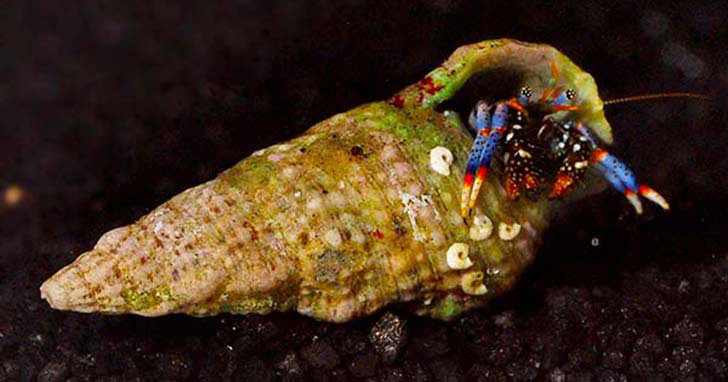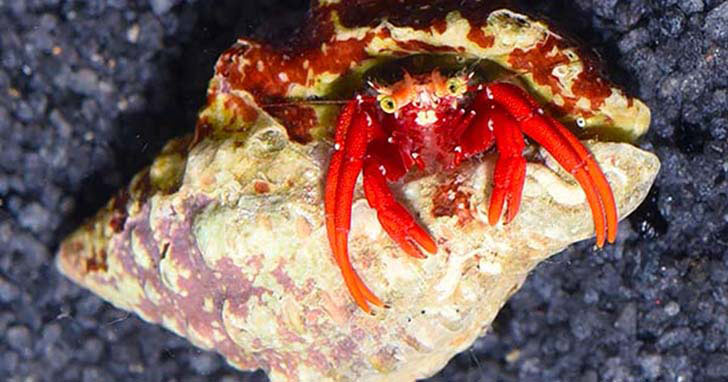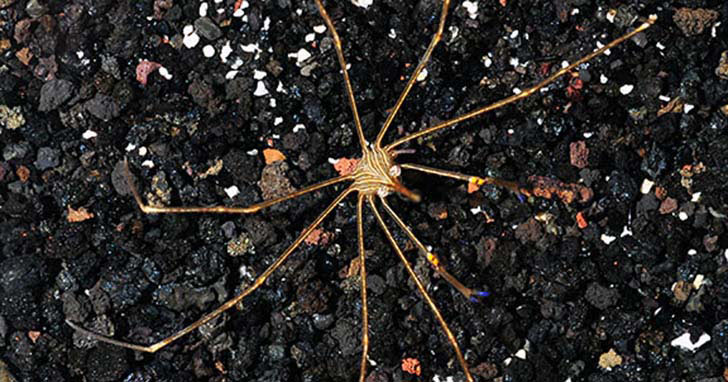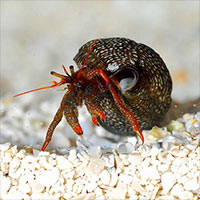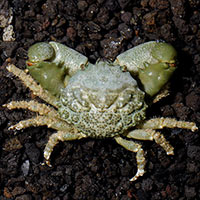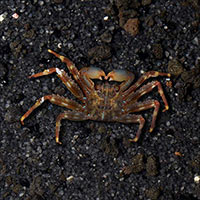Marine Invertebrates - Crabs
If you are looking to add a new invertebrate to your saltwater aquarium, you would have to search far and wide for one as interesting as a crab. They are fun to watch because they look interesting and exhibit a lot of personality. Crabs are part of the Malacostraca class, and in the Decapoda order of the Crustaceans family. There are thousands of crab species. In nature, marine crabs are commonly found in the earth’s oceans and seas. Physical characteristics of crabs Some of the reasons crabs are interesting are due to their physical characteristics. Having ten appendages, they use the first one or two pair for claws (depending on the species) and the remaining pairs as legs. Though they can walk slowly in any direction, they tend to move sideways when they are in a hurry. They possess a hard shell or exoskeleton, eyes with multiple lenses set into eyestalks, and a short tail. Gills allow marine crab to live underwater. If they do leave water, they need to return before their gills dry out. What do crabs eat? In addition to being fun to watch and adding interest to your marine aquarium, crabs perform a beneficial service due to their scavenging nature of eating dead matter in your tank. Some crabs are also algae eaters, so can help to control or rid your tank of algae. In addition to these natural foods, there are multi-foods that feed all the invertebrates, corals and fish in your marine aquarium.
Tank conditions for crabs When keeping crabs, you must maintain certain levels of iodine and calcium, as both these nutrients are required for molting. Due to the vast number of different crab species, rely on your supplier such as LiveAquaria® to provide the requirements your specific crab requires. If you are searching for suitable tankmates for crabs, select fish that swim in the upper and middle levels of the water column, and avoid aggressive or territorial fish. Be sure your aquarium has rocks, plants, and shells to provide your crabs areas in which to live and seek cover from predators. To help ease territorial aggression, be sure not to overstock the number of crabs you house. Keep in mind that crabs can be aggressive toward small fish and some scavenger fish. Some examples of crabs that can be aggressive are the Sally Lightfoot Crab Percnon gibbesi, and the Arrow Crab Stenorhynchus seticornis. Popular Saltwater Crabs There are many marine crabs available to you. Some of the more popular choices are shown here. The Scarlet Reef Hermit Crab Paguristes cadenati has yellow eyes and a red body and appendages. A smaller crab that will only grow to less than 2” at maturity, they are hardy algae-eaters with peaceful temperaments. Sally Lightfoot Crabs Percnon gibbesi, resemble a spider and has a brown body with orange or yellow rings on their legs. They are active and have an easy care level, but they do become more aggressive with age. The Blue Leg Hermit Crab, Clibanarius tricolor is a crab with blue legs that is tiny, reaching a maximum of 1” at maturity, and can easily make its home in a snail shell. Because of their small size, they should be kept in groups in larger aquariums. Emerald Crabs Mithraculus sculptus are popular choices because they eat bubble algae. With a green body and hairy green legs, they have an interesting look. Emerald Crabs are more active at night, preferring to spend the majority of their day hiding, only venturing out to feed. Keep them well fed so they do not prey on their smaller tankmates. Porcelain Crabs Neopetrolisthes ohshimai get their name from the fact that they are white all over with a red polka dot pattern on their shells, leaving a white edge. They have large claws that are used to ward off predators. Porcelain Crabs eat planktonic food and mucus from anemones.
Crab reproduction You can look at a crab’s abdomen to help you distinguish between males and females. Female crabs will have a smaller, rounder abdomen. In males, the abdomen is narrow and triangular in shape. After mating, the female crab will lay eggs in her abdomen. When the eggs hatch, this larvae are separated from their mother and will grow into a new crabs. In conclusion Due to their many unique characteristics, crabs can make interesting and colorful additions to your saltwater tank.
Different varieties of Crabs
|
|||||||||
|
|


